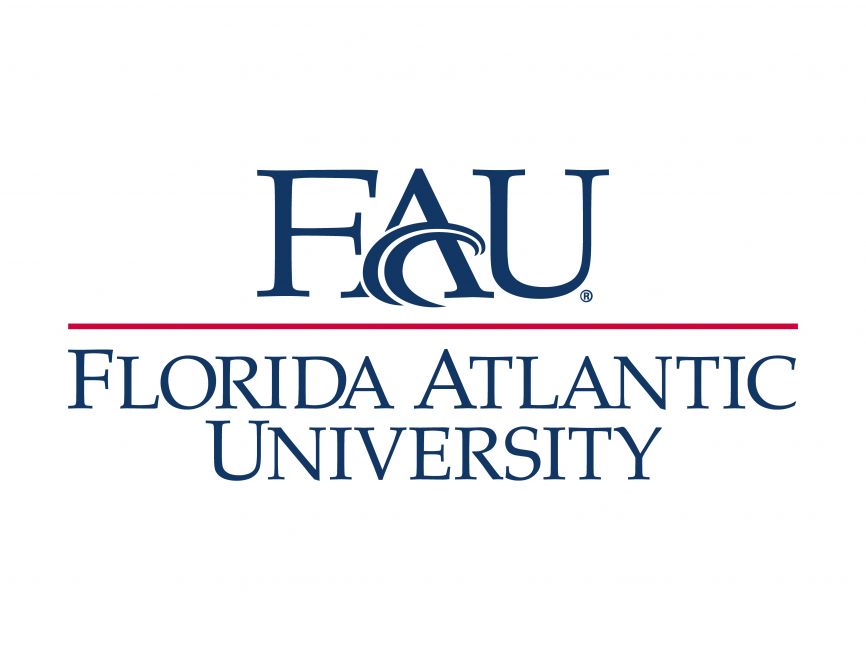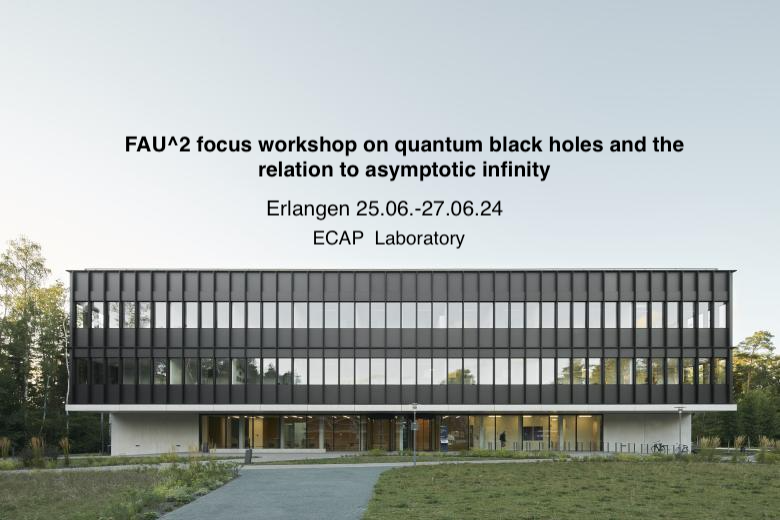- Indico style
- Indico style - inline minutes
- Indico style - numbered
- Indico style - numbered + minutes
- Indico Weeks View
FAU^2 Focus Workshop on quantum black holes and the relation to asymptotic infinity
→
Europe/Berlin
ECAP Laboratory Building
ECAP Laboratory Building
Nikolaus-Fiebiger-Straße 2
91058 Erlangen
Description
The FAU^2 focus workshop is organized to promote scientific exchange between different quantum gravity groups world wide on recent results and open questions on quantum black holes and the relation to asymptotic infinity. It is organised by the Florida Atlantic University (FAU) and FAU Erlangen-Nürnberg and is organised a hybrid workshop. The workshop topics include current research on quantum black holes in both the canonical and covariant formalisms and will be held in a hybrid format.
Invited speakers:
Jonathan Engle, Florida Atlantic University, (remotely)
Laurent Freidel, Perimeter Institute for Theoretical Physics, (remotely)
Viqar Husain, University of New Brunswick, (remotely)
Wojciech Kamiński, University of Warsaw
Jerzy Lewandowski, University of Warsaw, (remotely)
Hongguang Liu, FAU Erlangen-Nürnberg
Guillermo Mena Marugán, CSIC Madrid
Beatriz Elizaga Navascués, Louisiana State University
Javier Olmedo, University of Granda (remotely)
Alejandro Perez, Aix-Marseille University, (remotely)
Ana-Maria Raclariu, Kings College London, (remotely)
Carlo Rovelli, Western University, Aix-Marseille University, (remotely)
Hanno Sahlmann, FAU Erlangen-Nürnberg
Thomas Thiemann, FAU Erlangen-Nürnberg
Madhavan Varadarajan, Raman Research Institute, (remotely)
Francesca Vidotto, Western University
Wolfgang Wieland, FAU Erlangen-Nürnberg
Edward Wilson-Ewing, University of New Brunswick, (remotely)
Cong Zhang, FAU Erlangen-Nürnberg
Organizers: Muxin Han and Kristina Giesel


Participants
Abhay Ashtekar
Alejandro Perez
Alexander Jercher
Alexander Seifert
Ana-Maria Raclariu
Ashay Sathe
Beatriz Elizaga Navascués
Carlo Rovelli
cong zhang
Dongxue Qu
Edward Wilson-Ewing
Eric Rullit
Erick Muiño
Farshid Soltani
Francesca Vidotto
Giulia Maniccia
Guillermo A. Mena Marugán
Hanno Sahlmann
HONGGUANG LIU
Ibai Asensio
Javier Olmedo
Jerzy LEWANDOWSKI
Jingqian Gou
Jonas Neuser
Jonathan Engle
Jose Diogo Simao
Konstantin Eder
Kristina Giesel
Laurent Freidel
Lorenzo Boldorini
Luca Cafaro
Madhavan Varadarajan
Martin Zeiß
Matteo Bruno
Max Joseph Fahn
Melissa Rodriguez Zarate
Parampreet Singh
Paul Hartung
Qiaoyin Pan
Rafael Guolo Dias
Renata Ferrero
Robert Seeger
Sebastian Steinhaus
Seth Asante
Thomas Thiemann
Viqar Husain
Wojciech Kamiński
Wolfgang wieland

